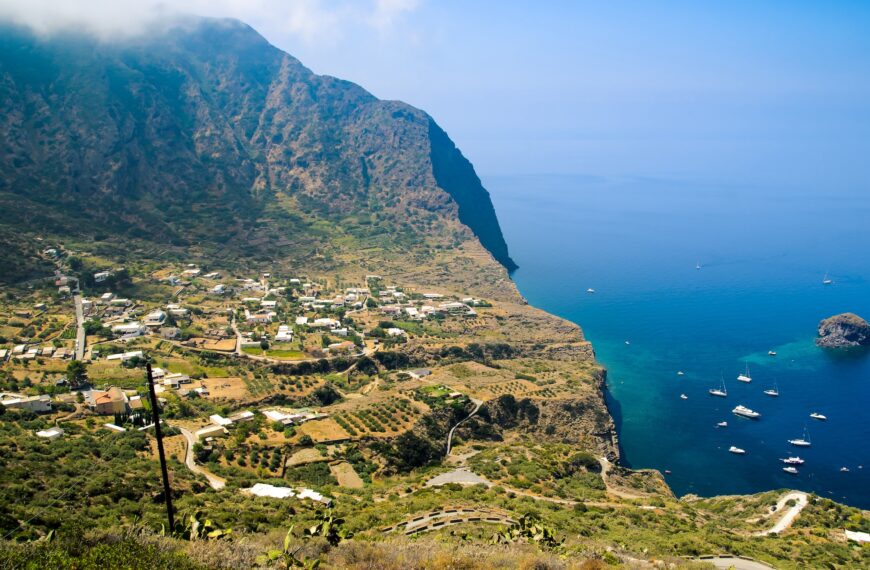In a previous article, we praised the wonders of the Costa Smeralda, focusing on the northern route from Golfo Pevero to Corsica. This time, we’ll head south, visiting beloved spots of elite tourism like Porto Rotondo, accessible beaches like those in Golfo Aranci, and untouched marine areas like the Island of Tavolara.
Porto Rotondo: More Than Just VIPs
Neighboring the modern tourist harbor of Portisco, Porto Rotondo is one of Gallura’s jewels, sharing the spotlight with Porto Cervo as a favorite destination for Italian and international tourists. Considered one of the most fashionable places in Sardinia and all of Italy, Poltu Rutundu (in Gallurese) attracts celebrities from finance and entertainment who choose it as a summer retreat. Technically not part of the Costa Smeralda but closely associated with it in the popular imagination, its name derives from the round shape of its port, built by Luigi and Nicolò Donà delle Rose in the late 1960s.
While its glamorous reputation draws many, Porto Rotondo offers more than just celebrity spotting. For example, Spiaggia Ira, one of its largest beaches, is a great spot for observing the jet set. Nearby, Punta Nuraghe Beach, also known as Spiaggia Contro Ira, boasts crystal-clear waters in shades of blue and offers stunning views of the Gulf of Cugnana. East of the harbor lies Spiaggia dei Sassi, surrounded by hills and named after the small stones that mix with its sand. Other noteworthy beaches include Shirley Bassey Beach, Punta Asfodelo Beach, and Marinella Beach. The latter, around 800 meters long, sits between Porto Rotondo and Golfo Aranci, offering views of the islands of Soffi and Mortorio.
Golfo Aranci: A Walkable Charm
There are no oranges in this small seaside town at the base of Campo Figari promontory. Its name likely stems from a mistranslation of the Sardinian Golfu di li Ranci, or “Gulf of Crabs.” No matter—the beauty of its sea and surrounding vegetation more than makes up for the confusion.
One of the most loved features of Golfo Aranci is the ability to walk to its city beaches, just steps from the town center. Before hitting the water, take a stroll through the low houses of the old fishing village. Just outside town, visit the Pozzo Sacro Milis, a significant Nuragic archaeological site featuring a rare “well temple,” with a staircase leading to a water source.
Nearby natural treasures include Cala Moresca, Cala Greca, and Cala del Sonno on the opposite side of the peninsula. Close to the train station lies Cala Sabina, a small, beautiful beach. Heading toward Arzachena, don’t miss Spiaggia di Capriccioli and Spiaggia del Principe. Further south, beyond the bustling Spiaggia Bianca, a chain of beaches stretches from Sos Aranzos to Cala Banana, Nodu Pianu, and Pittulongu Beach.
Tavolara: The Island That Exists
Nature lovers and diving enthusiasts should not miss the Island of Tavolara. Located opposite Porto San Paolo, Tavolara appears as a 7-kilometer-long limestone and granite parallelepiped, about 1 kilometer wide. Together with the islands of Molara and Molarotto, it forms part of the Marine Protected Area of Tavolara – Capo Coda Cavallo. Established in 1977, the area spans over 15,000 hectares of sea and 40 kilometers of coastline, preserving marine life in pristine condition.
With a small port and a handful of residents, Tavolara doesn’t offer accommodation, but it does provide the luxury of walking amidst untouched nature, sunbathing on postcard-perfect beaches, and, with a guide, climbing to its summit for breathtaking views.
Diving enthusiasts will find perfection at Secca del Papa, while nearby bays include Spiaggia di Porto Istana, Porto Taverna, Piscine di Molara, Cala Brandinchi, and Spiaggia di San Teodoro. Anchoring in the sheltered bay on the island’s northern to eastern side, you can spend the day exploring Tavolara. Enjoy the white sands of La Cinta or hike the trail to its coves, accompanied by informational signs about the island’s history, flora, and fauna.
From VIP hideaways to untouched natural beauty, the southern route along the Costa Smeralda promises a captivating journey through Sardinia’s treasures.





